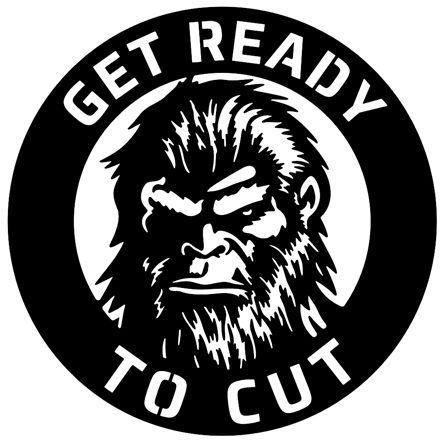Mike Scott
member
Hey, love it, nice work! Only had 7 lines to adjust.
I run a Mazak laser, and have a small issue with DXF lines being too small. Normally, I buy/download a DXF and have to spend hours readjusting lines to get them to the required lengths. (minimum of .008 inches on a line, .016 on an arc). If it's a single line, by itself, it's no big deal, the RADAN program just says "Hey, skipping this line, you won't miss it".. however, if it's several in succession.. it does odd things, like randomly throw cutlines around, chopping off features.
Anyway, yours came into AutoCAD at about 8" wide, and blew it up to 34" wide to run it, and it only had like 7 (maybe 8) arcs that were still too short.
Couple of questions for you..
Is that a plasma cutter or something that permits lines to be that small?
I even find 0-length lines on some DXFs.. what on earth would that be for?
Finally, do you use a tablet to draw with? and a program that will "autocorrect/ignore" small movements? Does such a thing exist? I hate doing artwork and being forced to spend days fixing it.
Again, completely satisfied with my purchase, and won't hesitate to go for one of your collections next time I need something you've got. Thanks!
I run a Mazak laser, and have a small issue with DXF lines being too small. Normally, I buy/download a DXF and have to spend hours readjusting lines to get them to the required lengths. (minimum of .008 inches on a line, .016 on an arc). If it's a single line, by itself, it's no big deal, the RADAN program just says "Hey, skipping this line, you won't miss it".. however, if it's several in succession.. it does odd things, like randomly throw cutlines around, chopping off features.
Anyway, yours came into AutoCAD at about 8" wide, and blew it up to 34" wide to run it, and it only had like 7 (maybe 8) arcs that were still too short.
Couple of questions for you..
Is that a plasma cutter or something that permits lines to be that small?
I even find 0-length lines on some DXFs.. what on earth would that be for?
Finally, do you use a tablet to draw with? and a program that will "autocorrect/ignore" small movements? Does such a thing exist? I hate doing artwork and being forced to spend days fixing it.
Again, completely satisfied with my purchase, and won't hesitate to go for one of your collections next time I need something you've got. Thanks!
